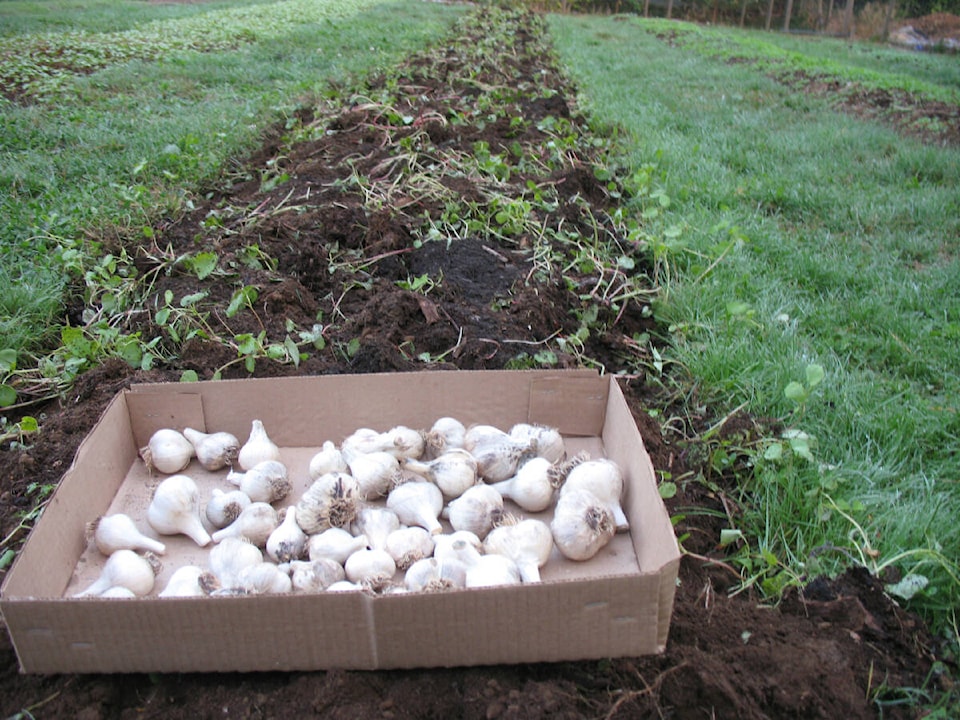By Mary Lowther
I’m a traditionalist: I take advantage of what my forebears learned through trial and error, but still take time to experiment. Ironically, what I most often learn from my effort is that I cannot improve on the methods passed down through generations.
When to plant garlic, for example. Late October plantings have long been recommended for this area and produced the most reliable bulbs for me, because the roots become established before freezing weather stops them and their tops haven’t broken through yet to possibly suffer winter kill. There’s enough time before hard winter for roots to get established, ready to burst stalks through the soil the following spring warmup.
I have many bulbs harvested from July so I’ll pick the largest to plant. I’ve dug under the crop of buckwheat sown a few weeks ago and let that rot for two weeks, and next I’ll sprinkle organic fertilizer over the bed at the rate of four litres per hundred square feet and scratch that in with the hoe. Since I already sprinkled about a half inch of compost over the bed before I sowed the buckwheat, I won’t add any more. I must say that turning under the buckwheat was dead easy so it’ll be easy to push in the garlic cloves. I’m very happy with how lush and black the soil has become in only two years, so hopefully the garlic’s size will reflect the quality of the soil.
I won’t break apart the cloves until I’m ready to plant as Ron Engeland (Growing Great Garlic) has learned that they grow better when left on the bulb right up to planting time and the wise reader should not argue with what works. I break each bulb apart into cloves and stick each clove four inches deep in the ground, pointed side up so the roots on the flat side use less energy to grow downward. I usually planted each clove eight inches apart, but this year I’m experimenting with planting them one foot apart to see if they grow the larger bulbs that we like. Most of my bulbs come from Bruce and Jeannette Dodd’s stash in Lake Cowichan and since covering the bed with three inches of leaves produced huge bulbs for them, I’m doing that too. In fact, their garlic was so good that they should be writing this column.
Next spring the garlic pops through the leaves and the soil stays nicely mulched till harvest time in mid-July. Last year I didn’t cut the scapes (stalks) off some of the plants to see if they’d store better as Ron Engeland suggests, but I never found any difference, so I plan on cutting them next year and using the scapes in recipes. Since last spring was so long, wet and cold, I didn’t water the garlic at all and it looks pretty good, but next year if it’s too dry, I plan on doing some watering.
My garlic could be bigger but this is a new bed and not as rich as it’s going to get once I’m finished with it. I’m looking for a source of healthy manure for the perfect compost, but it’s taking a little longer than expected and David is getting impatient, and says we can get all the equine end product we need by shredding old budget speeches.
